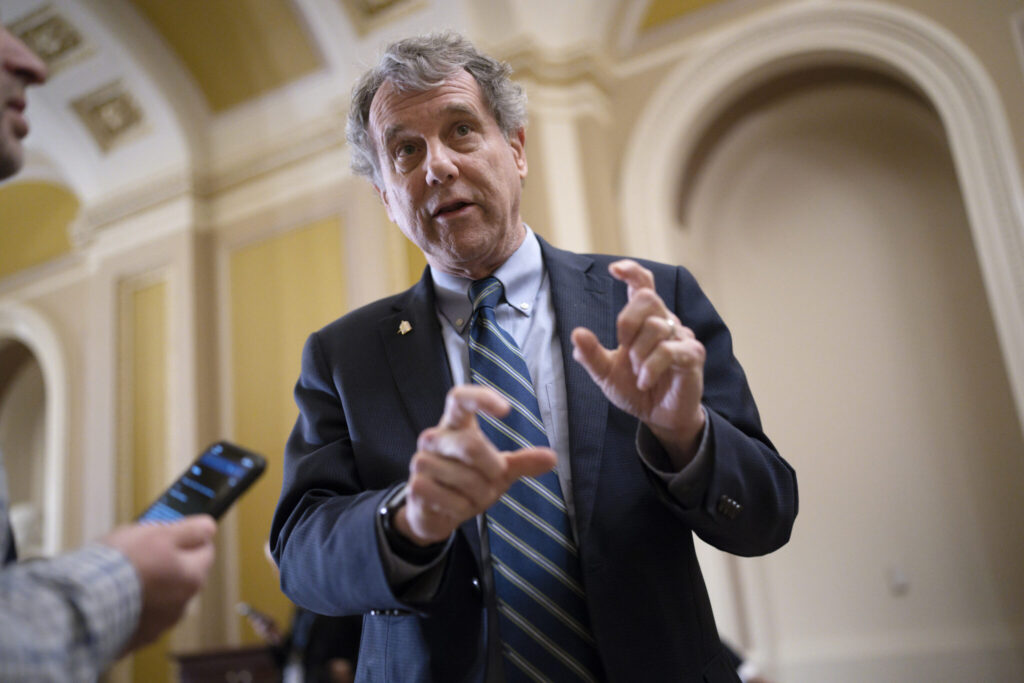Democratic Senate campaign/ 2024 Senate races/ Senate majority defense/ DSCC funding/ Newslooks/ ATLANTA/ Morning Edition/ J. Mansour/ Democrats are investing $25 million to expand voter outreach in 10 states as they fight to maintain their slim Senate majority. The funds will support efforts to defend key Democratic-held seats and target Republican incumbents. With less than two months until the election, the Democratic Senatorial Campaign Committee is ramping up efforts in crucial battlegrounds like Arizona, Ohio, and Texas.

Democrats’ $25 Million Senate Campaign Strategy Quick Looks:
- Democrats are investing $25 million across 10 states to defend their Senate majority.
- The funds will support voter outreach, targeting key states like Arizona, Texas, and Florida.
- Democrats hold a narrow 51-49 Senate majority and face tough re-election battles.
- Five of the 10 targeted states overlap with key presidential battlegrounds.
- The Democratic Senatorial Campaign Committee’s strategy includes on-the-ground organizing, digital campaigns, and efforts to boost turnout among young and minority voters.
- Harris’ campaign has raised over $500 million since July, contributing $25 million to down-ballot efforts, including $10 million for Senate races.
- Republicans have outraised Senate Democrats overall this cycle but Democrats ended July with more cash on hand.
Democrats Spend $25 Million in 10 States to Defend Senate Majority
Deep Look:
With a slim 51-49 majority in the U.S. Senate, Democrats are pouring $25 million into critical voter outreach across 10 states as they prepare for the 2024 election. The Democratic Senatorial Campaign Committee (DSCC) announced the investment, which will focus on defending vulnerable seats and targeting Republican-held positions, hoping to maintain control of the Senate.
The November 5 election is approaching quickly, and this surge in funding follows a fundraising boost that began when President Joe Biden ended his re-election campaign in July, endorsing Vice President Kamala Harris as the new Democratic nominee. As Harris leads the Democratic ticket, her influence is extending down-ballot, with Senate Democrats relying on strong voter turnout to preserve their majority.
“A formidable ground game makes all the difference in close races,” said DSCC Chairman Gary Peters, signaling that the outreach effort is designed to reach voters in the final stretch before Election Day. The $25 million outlay will be distributed among key states: Arizona, Florida, Maryland, Michigan, Montana, Nevada, Ohio, Pennsylvania, Texas, and Wisconsin. The strategy includes hiring more field organizers, conducting in-person and digital voter engagement, and deploying targeted communication campaigns to specific demographics, especially young and minority voters.
The battle for the Senate is a tough one. Of the 33 Senate seats up for election in November, Democrats must defend 23 seats, including two held by independents who caucus with the Democrats. This makes it a challenging playing field, particularly since five of the states targeted for outreach—Arizona, Michigan, Nevada, Pennsylvania, and Wisconsin—are also presidential battlegrounds. These states were narrowly won by Biden in 2020 and remain competitive in 2024.
Some of the most competitive Senate races include incumbent Democratic Senators Jon Tester of Montana and Sherrod Brown of Ohio. Both men have strong local followings but face challenges running in states that have consistently favored Donald Trump in past elections. Tester and Brown will need a significant number of voters to split their tickets, voting for Trump at the top while supporting them down-ballot. To reinforce these efforts, Senate Democrats have opened field offices in states like Ohio and Montana, as they are not receiving the same coordinated support as the presidential battlegrounds.
The DSCC has kept the exact distribution of funds across the states confidential but has made clear that efforts are focused on shoring up Democratic defenses in tough states like Arizona, as well as going on the offensive in traditionally Republican states like Florida and Texas, where Democratic hopes hinge on unseating Senators Rick Scott and Ted Cruz, respectively.
The outreach effort also builds on the DSCC’s ongoing advertising campaign, which has already committed $79 million to boost Democratic Senate candidates. While these funds are significant, they come in the context of an overall financial gap between Senate Democrats and their Republican counterparts. The National Republican Senatorial Committee (NRSC) has outraised the DSCC this cycle, reporting $181.3 million raised through the end of July, compared to Democrats’ $154 million. However, Senate Democrats had more cash on hand at the end of July, holding $59.3 million compared to Republicans’ $51 million, giving them an edge in the crucial final months before the election.
One of the driving forces behind this financial push has been Kamala Harris. Since taking over as the Democratic nominee in July, Harris has raised more than $500 million for her campaign and the party. Recognizing the importance of congressional races to her potential presidency, Harris has allocated $25 million of her campaign funds to down-ballot efforts, with $10 million going to the Senate races. Her fundraising success has expanded the party’s options for outreach and voter mobilization.
Democrats’ overall strategy for maintaining Senate control relies on a combination of grassroots engagement and capitalizing on their existing infrastructure, which they believe is stronger than the GOP’s ground game. The party hopes to offset Republican financial advantages by maximizing voter turnout among core Democratic supporters and persuading a small but crucial segment of swing voters.
Despite Democrats’ optimistic outlook, Republicans are not far behind in preparing for the election. The NRSC has aggressively invested in Senate races, focusing on mobilizing Republican voters, especially in key battleground states. With control of both the White House and Congress on the line, marginal differences in voter turnout and persuasion could make or break either party’s chances.
As the final stretch of the campaign unfolds, all eyes will be on how these investments play out, particularly in states like Arizona, Texas, and Ohio, where Senate races could be the deciding factor in determining the balance of power in the next Congress.







